The Old English Fair at Newport’s Albert Hall, held to raise funds for the town’s Infirmary and new Free Library, proved a lively and highly successful event. Opened by the Duke of Beaufort with great ceremony, including heralds, Beefeaters, and the band of the Royal Welsh Fusiliers, the fair transformed the hall into a Tudor-style street complete with timber-fronted shops, a maypole, and an Elizabethan mansion for the musicians.
The fair was held between Wednesday June 28th June and Saturday 1st July.
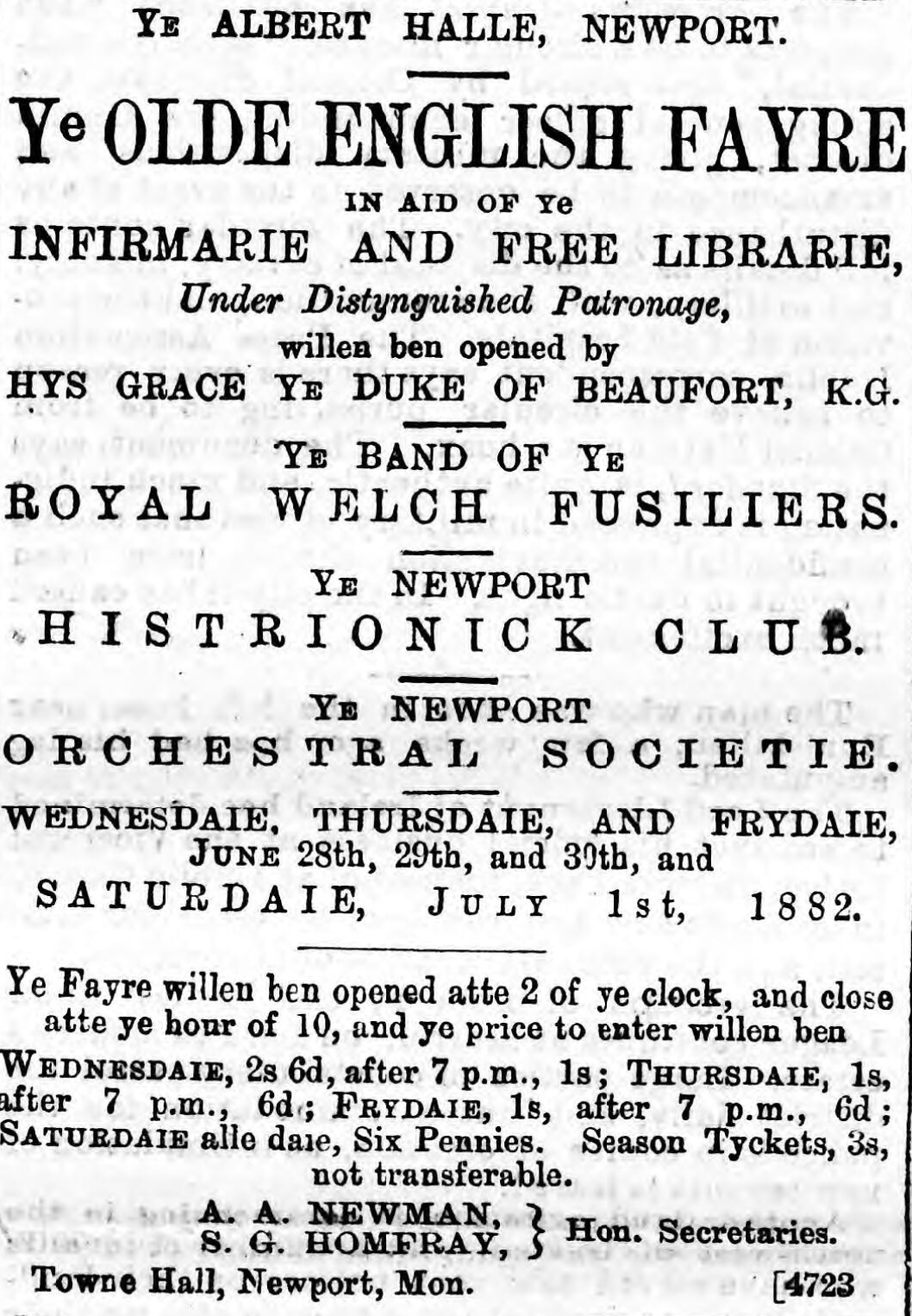
Local ladies, dressed in elaborate Old English costumes, staffed stalls selling everything from buns, toys, and fancy goods to silverware and fresh produce, while attractions such as a waxwork show, shooting gallery, comic lectures, and a Punch and Judy performance entertained the crowds. Illuminated by electric light in the evenings and accompanied by music and ballad singing, the fair drew immense attendance, generating substantial takings over multiple days to furnish the Infirmary’s new wing and the Dock Street Free Library, ensuring the Mayor’s joint fundraising initiative would meet its goals.
Venue
The Royal Albert Hall was opened in 1875 and could seat 1,100 people. It was used for a variety of purposed including a circus, concerts and the Old English Fayre.

After around 20 years it became a Drill Hall and became the headquarters of the 1st Battalion The Monmouthshire Regiment.
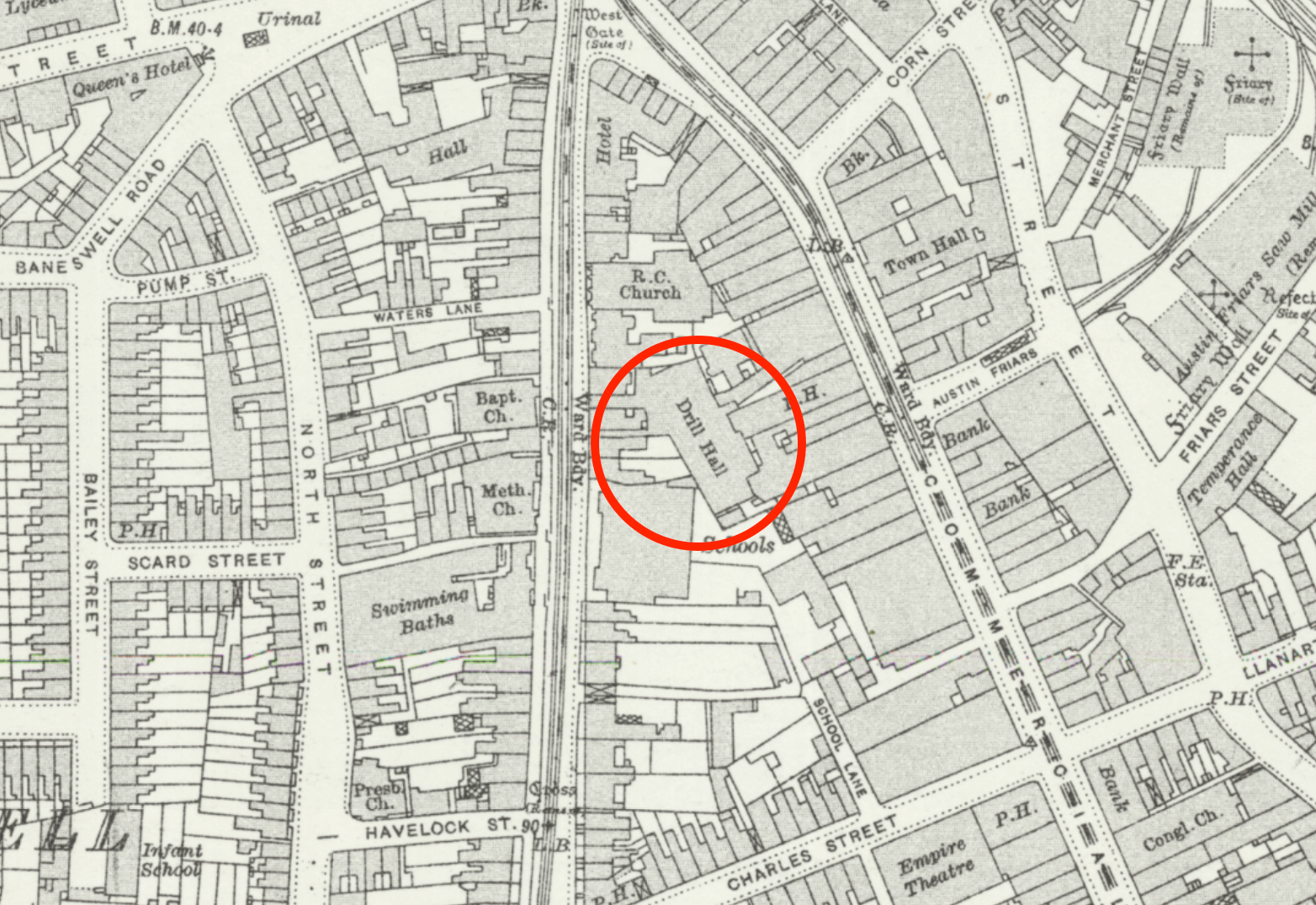
Monmouthshire Merlin Review
The rest of this post is a review printed by the Monmouthshire Merlin on the eve of the last day of the fair.
Since Wednesday the Albert Hall, Newport, has been thronged daily by visitors to the Old English Fair held for the benefit of the Infirmary and Free Library of the town and there can be but little doubt that when the fair is closed tomorrow (Saturday) evening the treasurers of the two Institutions named will be able to count with confidence on a substantial augmentation of the funds under their charge.
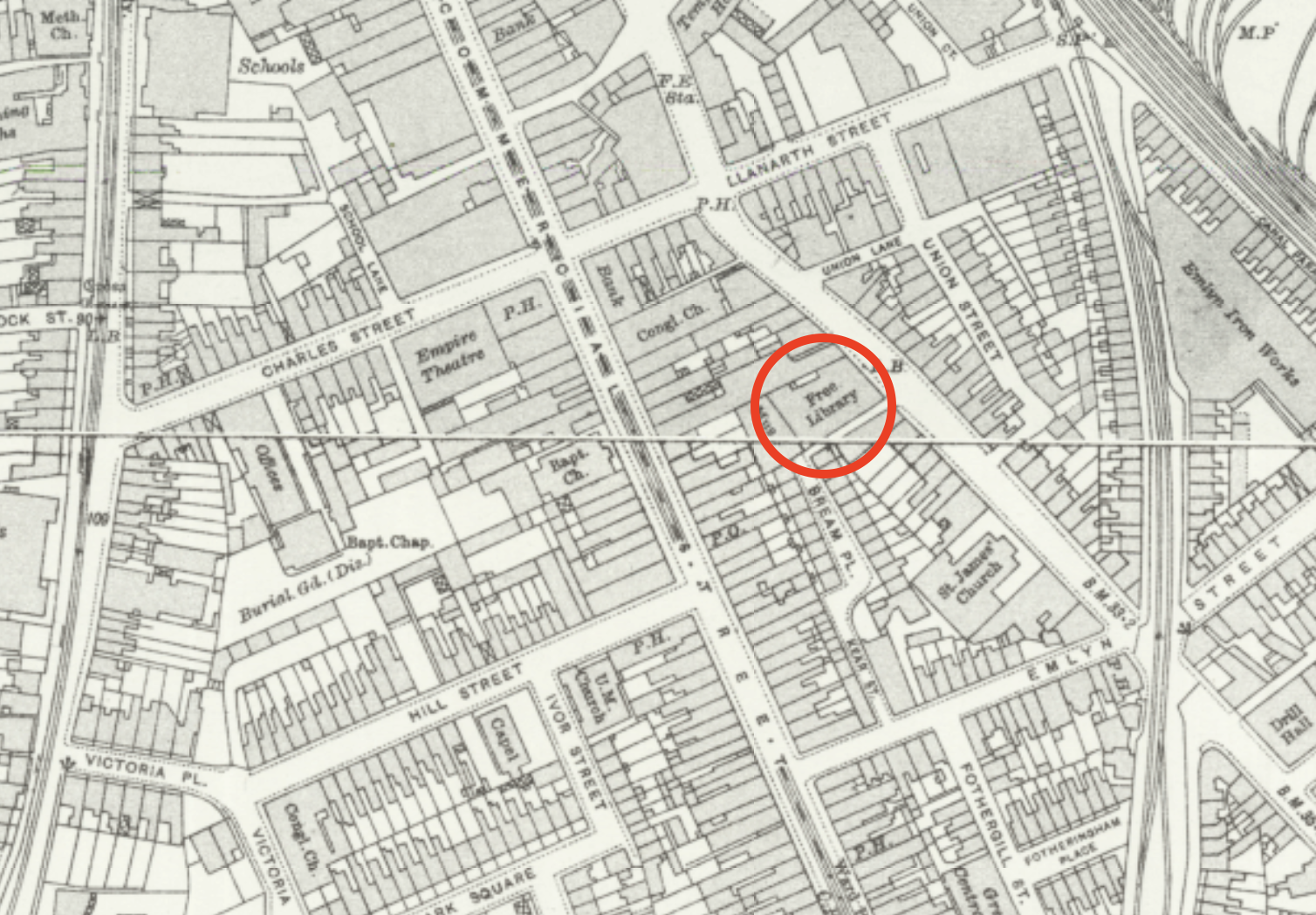
The Free Library, we may explain, for the benefit of those who are not posted up in modern local history, is an entirely new building situated in Dock-street, and rapidly approaching completion; whilst the Infirmary on Stow Hill, having become too small for the wants of our growing borough and neighbourhood, has been enlarged by the addition of a new wing containing accommodation for 20 patients.
In each case the cost of bricks and mortar is provided for the Free Library committee are lucky enough to have public funds at their disposal, and a handsome legacy left by a late respected resident in the town rendered the greatly needed addition to the Infirmary possible but the expense of furnishing has yet to be met. Last year, shortly before the then Mayor (Councillor J. R. Jacob) went out of office, his Worship issued an appeal for subscriptions towards the Free Library furnishing fund, £600 being the amount required, but although several gentlemen put down their names for liberal contributions, the sums given or promised made a comparatively small total, and after a time little progress was perceptible.
Luckily, however, the present occupant of the civic chair (Councillor T. Beynon) gave the matter his attention, and being anxious to assist the managers of the Infirmary as well, for they were earnestly seeking pecuniary assistance in rendering the Institution under their care available to the fullest extent as early as possible, he inaugurated a joint furnishing fund. But Mr. Beynon did not content himself with setting his project on foot; he desired that it should result in success, and proceeded to consider how the consummation so devoutly to be wished for could be best achieved. After mature deliberation, the Mayor wisely resolved to seek to seek the cooperation of influential persons in getting up a bazaar, one of the most successful methods ever discovered of extracting money from the pockets of easy-going people.
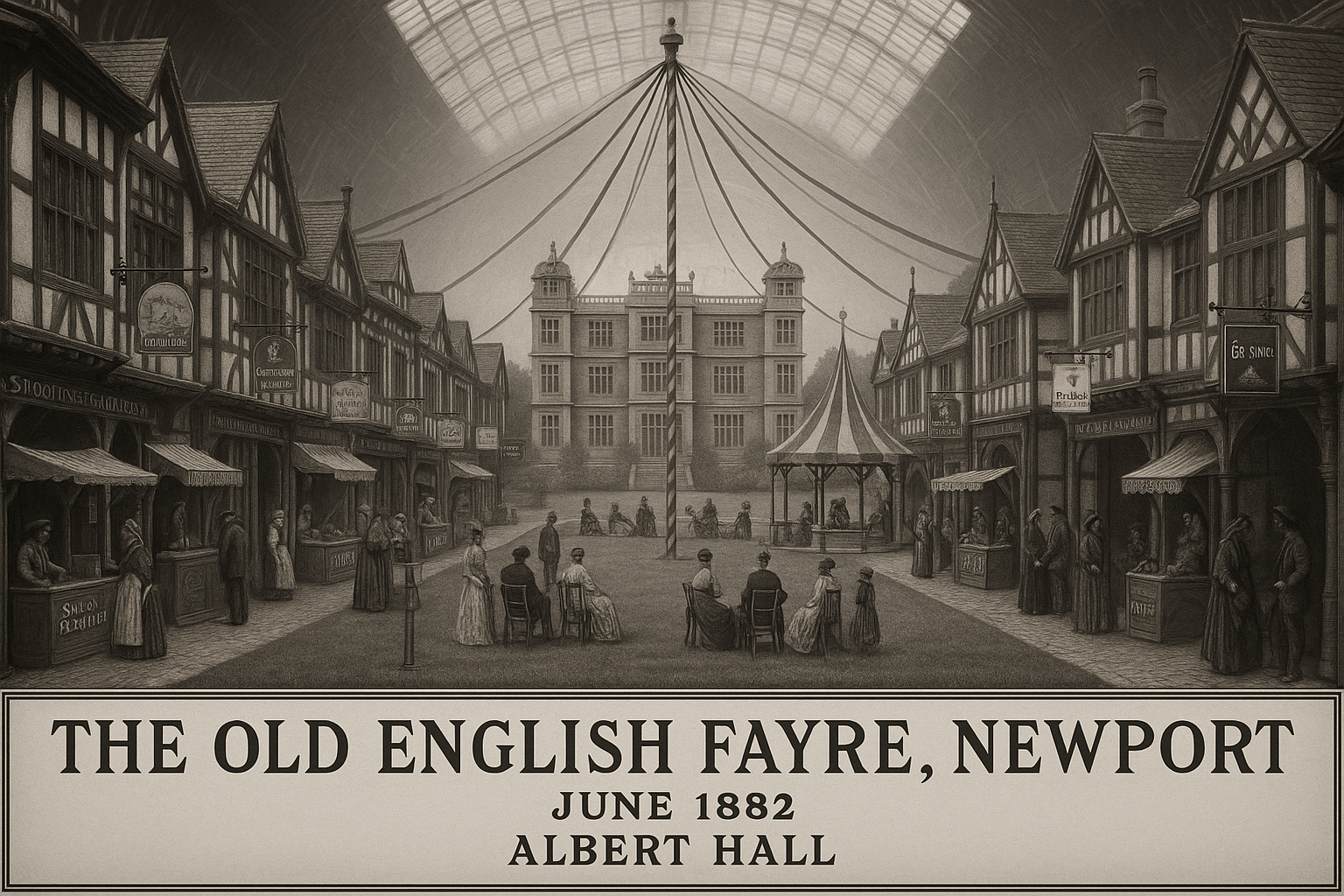
It having been decided that the bazaar should take the form of an old English Fair, the Albert Hall was engaged, and the services of Mesers Bernasconi and Langford secured as architects and builders.
These gentlemen were requested to arrange the Hall on the lines of an English marketing street of the Tudor period, and the work has been carried out in a thoroughly realistic manner. On entering through an archway, above which rises a feudal castle, the visitors see on either hand a row of old-fashioned houses which are accurate representations of the timber-fronted dwellings common in the Golden age, and still to be seen in a few towns such as Chester and Shrewsbury.
Each house consists of two storeys, the lower one being used for the shop or stall. In the centre a Maypole, surrounded by flowers, rears its lofty head, and the end of the street is occupied by an Elizabethan mansion, the forepart of which, representing the lawns and shrubberies, affords accommodation for the band of musicians in attendance.
We will now proceed to enumerate the shops in the streets, giving a brief description of the class of wares sold in each, and the names of the ladies by whom the establishments are managed.
THE OLD CHELSEA BUN HOUSE is devoted to the sale of refreshments, the hostess being Mrs Lyne, whose assistants are Mrs C. R. Lyne, Miss Lyne, and Miss Evans.
AT THE SIGN OF THE GOLDEN FLEECE articles of a very miscellaneous character may be obtained. They are, as the "Book of the Fair" states, of "many forms and many colours." Here Mrs Hewertson presides, and is assisted by Miss Draper, Miss Long, Miss F. Long, Miss Jones, and Miss L. Jones.
AT THE SIGN OF THE BICKREE LOGUE OF IND wares, many of them manufactured with much skill from India and other foreign countries, are to be had. Mrs C. T. Wallis and the Misses Wallis, to whom the shop belongs, are assisted by Mrs H. Wallis, Miss Evans, and Miss Wallis.
AT THE SIGN OF THE FLEUR DE LYS fancy goods are exhibited in profusion. Here Mrs H. J. Davis Mrs S. G Homfray, and Mrs A. C. Jones are assisted by Miss Davis, Miss Laybourne, and Miss Campbell-
AT THS SIGN OF THE BRITISH LION silver work and cutlery form the staple stock-in-trade, but specimens of feminine handiwork also find a place in the establishment. Mrs Beynon is the head saleswoman her assistants being the Misses Beynon, Miss Mather, and Miss Cory.
AT THE 8IGN OF THE SILVER ANCHOR there is a choice display of china, glass, and fine art ware. The goods possess the double advantage of being both ornamental and useful. Mrs Grice is in charge, and her assistants are Miss Stevens, the Misses Elliott, the Misses Palling, and Miss Cooper.
AT THE SIGN OF THE NOAH'S ARK children's requirements are especially studied. The splendid assortment of dolls and other toys, games, &c., must prove a powerful source of attraction to juveniles, whilst those who have attained to years of discretion can hardly fail to be interested in the display. The business is managed by Mrs Firbank, Mrs G. W. Jones, Mrs Gibbs, and Mrs Parnall, with the assistance of Miss Firbank, the Misses Jones, Miss Young, Miss Williams, and Miss Babbington.
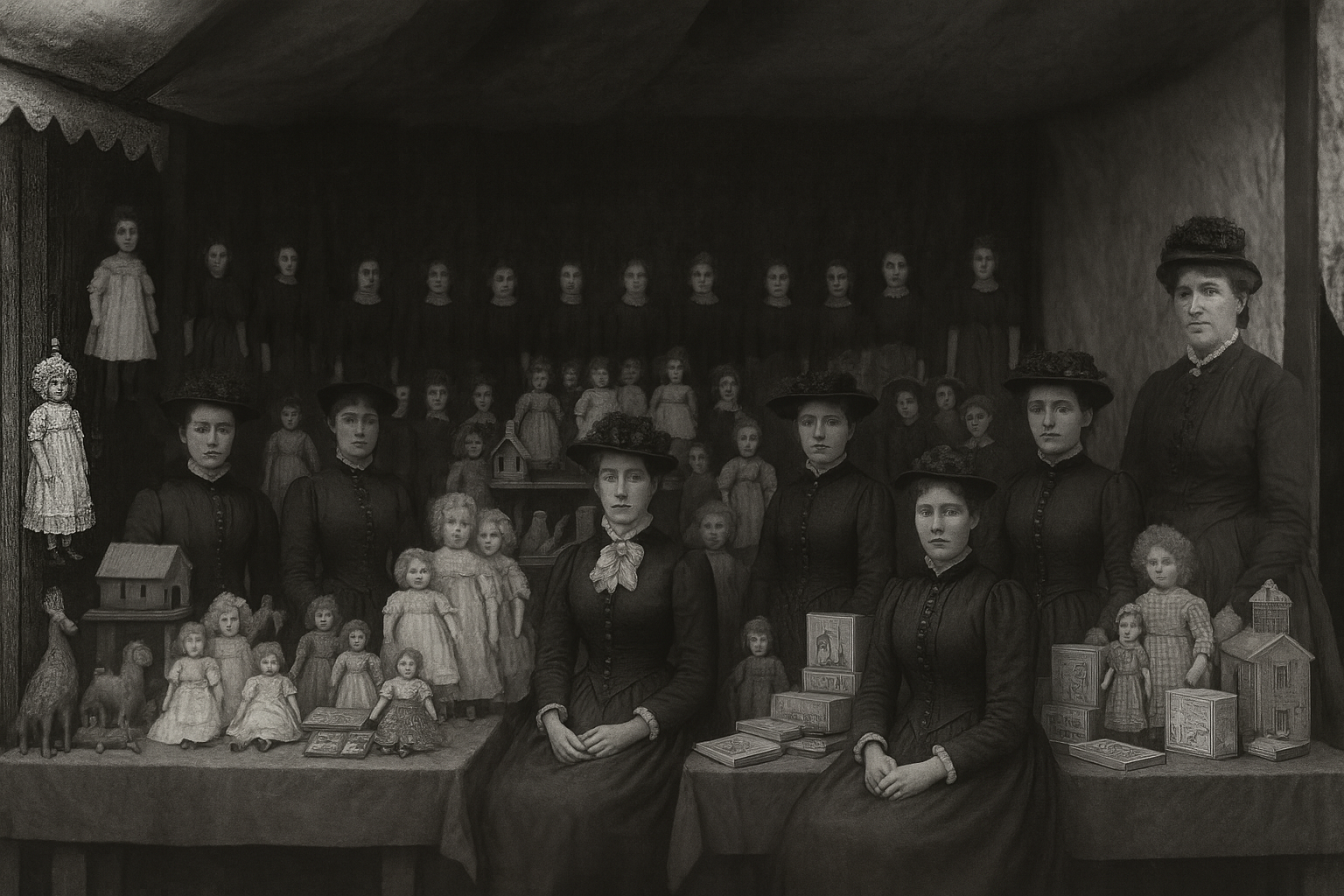
AT THE SIGN OF THE ROBIN HOOD fancy goods and useful articles in endless variety invite the attention of purchasers. Mrs Moses, Mrs H. W. Evans, and Mrs Webber direct this undertaking the Misses Moses, Misses Evans, Miss White, and Miss Noble, being their assistants.
AT THE SIGN OF THE GOLDEN ARROW the articles tastefully displayed are really worth the attention of buyers, are of the kind usually to be found in Berlin wool shops. Mrs T. Phillips, Mrs T. Latch, and Mrs Burton have the assistance of Miss Phillips and the Misses Latch in conducting the affairs of this emporium.
AT THE SIGN OF THE SHERWOOD OAK tempting country butter, fresh eggs, vegetables, luscious fruit, &c., are sold by Mrs. Cartwright and her assistants Miss Hateley, Miss Daniel, Miss Roper, and Miss Thomas.
AT THE SIGN OF HEREWARD THE WAKE fancy goods predominate. Everything on offer here is stated to be pretty and such as will delight the purchaser. Mrs T. J. Beynon manages the mart. She is assisted by Miss Batchelor, Miss Wade, Miss Kennedy and Miss E. Wood.
The Maypole Flower Stand, loaded with a tempting display of horticultural specimens is presided over by Mrs. Donald Bain, who has assistance from Miss Nicholson, the Misses Haveland, Miss E. Lyne, Miss C. Phillips, and Miss Cartwright.
Other features of the fair, in connection with each of an extra charge is made, are:—
THE OLD VILLAGE WELL, under the care of Miss Phillips and Miss Latch.
THE HIT IT FAIR, superintended by Messrs. Langford and Bernasconi.
THE SCENT FOUNTAIN in charge of Miss Lyne.
THE GYPSIES (Miss Homfray and Miss Eva Beynon).
THE PICTURES THAT DISSOLVE By MAGIC, exhibitor, Mr. R. N. Osborne.
THE WAX WORKS SHOW AND TABLEAUX VIVANTS, by Members of the Newport Histrionic Club.
THE OLD ENGLISH BALLAD CONCERTS, by Messrs. H. Prothero, E. B. Newman, and E. W. Willey.
THE BAKER'S OVEN, Miss Evaias and Miss Moses.
THE SHOOTING GALLERY, conducted by Misses Cooper and Palling, and Masters Somerset and E. G. Davies.
THE WEIGHING MACHINE, superintendents, Miss Evans and Miss Moses.
PUNCH AND JUDY, showmen, Captain Lonsdale and Mr. E. Bellerby.
COMIC LECTURES by Messrs. Langford and Bernasconi.

The Fair was opened at 2 p.m. on Wednesday by His Grace the Duke of Beaufort, K. G., in the presence of an assembly comprising the elite of the town and vicinity. Heralds, dressed in the uniform of that ancient body the Beefeaters, having proclaimed the approaching event, a procession was formed consisting of the Mayor, the Duke of Beaufort, the High Sheriff of the County, Lord Tredegar, Col. the Hon. F. C. Morgan, M.P., Sir George Walker, Bart., the Rev. H. P. Somerset, Lieut. Colonel Lindsay, Captain Lonsdale, Messrs. Raglan Somerset, T. Cordes, Craw- shay Bailey, D. Whitehouse, R. W. Hamilton, T. Gratrex, W. G. Cartwright, E. J. Grice, H. J. Davis, C. Lyne, D. Harrhy, J. Murphy, Wyndham Jones, A. A. Williams, J. D. Pain, R. Addams-Williams, R. Layboarne, R. Donald Bain, T. Kessick, E. Webber, E. W. Willey, H. J. Parnall, C. T. Wallis, C. Kirby, J. T. Green, H. Beynon, T. Latch, C. Cox, A. A. Newman, and Captain Homfray.
These noblemen and gentlemen proceeded through the Fair, and the Mayor, the Duke of Beaufort, Lord Tredegar, Colonel Morgan, M.P., the Hon. Secretaries (Mr. Newm&n and Captain Homfray), with a few others grouped themselves in front of the Elizabethan mansion already referred to. The heralds were drawn up on each side of what may be called the courtyard, and the band of the Royal Welsh Fusileers played the first veroe of the National Anthem," the visitors uncovering meanwhile. A blast of trumpets followed, after which the Mayor made a short speech.
He said, we are fortunate to-day in three things. First, ladies and gentlemen, we are fortunate in having the Duke of Beaufort to open this Old English Fair; secondly, we are fortunate in being favoured with splendid weather, and securing such a distinguished company of county gentlemen and thirdly, the institutions we are here to assist are fortunate, for I have received a cheque from Mr. Daniel Whitehouse for £100, and from Mr. G. Fothergill for £25. The Duke of Beaufort very kindly consented to hold the Royal College of Music meeting to-day, which suits very well our bazaar. I will now ask the Duke of Beaufort to open the bazaar. (Applause.)
The Duke of Beaufort then stepped forward and said: It has given me very great pleasure to come here to open this fancy fair to-day. The fair is held for a very good object—to raise funds for that excellent institution, the Newport Infirmary. We hope it will prove a great success, and that great benefit will accrue to the institution. I regret that the Duchess was not able to come here with me. Other engagements prevented her, and you must accept me as her substitute. I now declare the fair open. (Loud applause.)
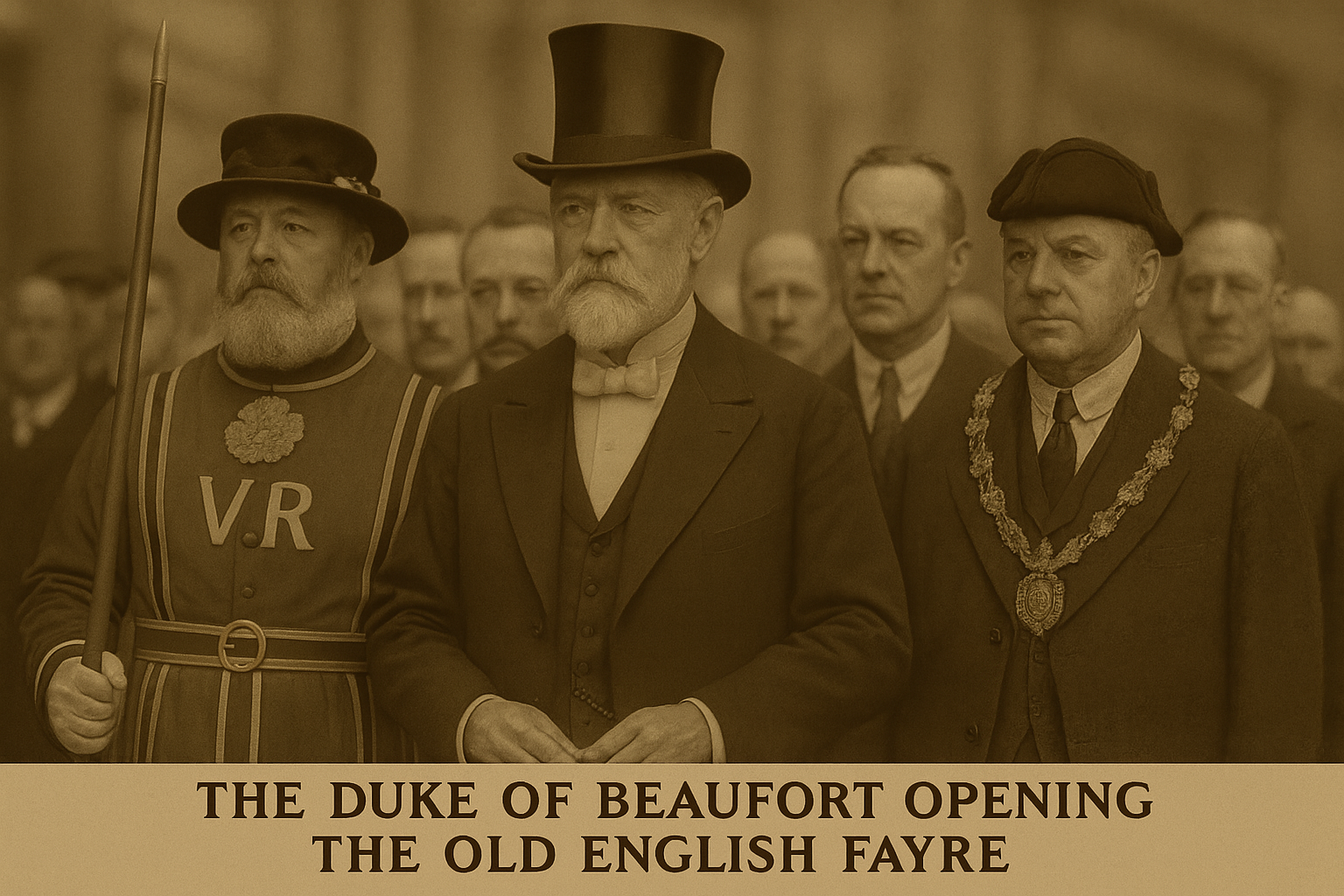
Business commenced immediately, and up to ten o'clock, the hour for closing, the "shopkeepers" and their assistants had a busy time. A considerable sum of money was also taken in connection with the different entertainments, and the total receipts during the day were £740 .1s. 8d.
A very striking and interesting feature of the Fair is that the ladies by whom the business is conducted are all attired in Old English costumes — some elegant and costly, and all attractive—and in the evening, when the Brush" electric light wa.s thrown upon it, the scene presented a most enchanting appearance.
After the fair had commenced, the Duke of Beaufort lunched with the Mayor and a select party in one of the ante-rooms. His Worship presided, and Alderman Lyne, the Deputy-Mayor, occupied the vice-chair. The guests, besides the Duke, were Lord Tredegar, Colonel Morgan, M.P., the High Sheriff, Sir George Walker, T, Cordes, Esq., Crawshay Bailey, Esq., Colonel Lindsay, the Rev. H. P. Somerset, J. A. Herbert, Esq., D. Whitehouse, Esq., W. G. Cartwright, Esq., T. Gratrex, Esq., E. J. Grice, Esq., and R. W. Hamilton, Esq. Before leaving, His Grace thanked the Mayor for his genial hospitality. He subsequently made a few purchases in the fair.
Yesterday the attendance ef visitors was again exceedingly great,
and in the evening it became necessary to close the barrier for a time, so dense was the throng.
A large quantity of goods were disposed of and the revels received a large amount of patronage. The band of the Royal Welsh Fusileers played in the afternoon and evening, and there was ballad singing at intervals by Mrs. Matthews Misses A Morgan, Daniell, Moses, Yorath, and Prothero Messrs. R. Addams-Williams, J. A. White W Hitchcox, E. H. Newman, and E. G. R. Richards. Miss Vaughan played the accompaniments, and Miss Latch gave several violin solos. The day's takings were £678 4s. 3d. The fair maintains its popularity to-day and is being much frequented.
To-morrow when the price of admission will be sixpence all day a great crush is anticipated.
Ye Booke of ye Fayre
"Ye Booke of ye Fayre," prepared by Messrs. Mullock and Son, is an appropriate, and in some senses remarkable, publication. To say that it contains all the information which one might look for in a guide to the fair, is but to indicate its practical value.
In relation to the fair, it is a sort of "Enquire within for everything" but it is more than this—it is a work of art, in which an attempt to set forth old English ideas as to typography, illustration, and general style, is well sustained.
The sketches, of which there are several, are clever and characteristic and in the symbolic and personal touches there is evidence of thought, wit, research, and patient handiwork. "Ye Booke:" is, moreover, locally, in some sense, a product "of all the talents." For the seventy or more pages of; illustrated. and illuminated letter-press of which it consists the literary and artistic skill of about a dozen local contributors has been brought into requisition and the result is a compilation creditable alike to contributors and publishers.
For the proof of this we must now refer the reader to the work itself with the practical remark that each book contains a ticket for the "grande lotterie."
— Monmouthshire Merlin, 30th June, 1882



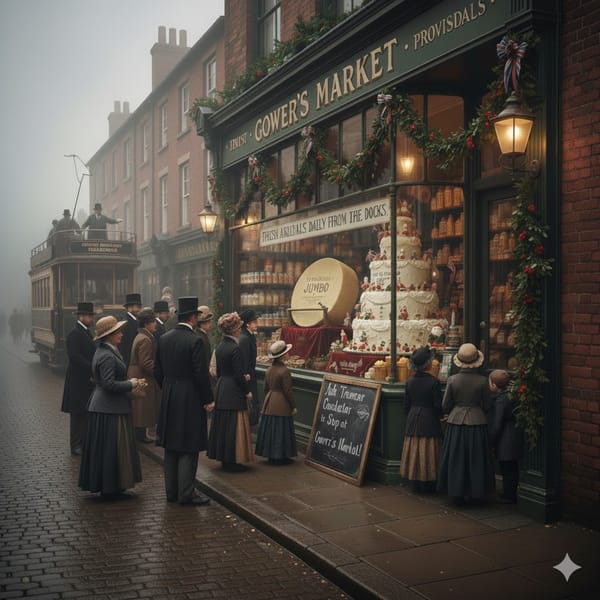
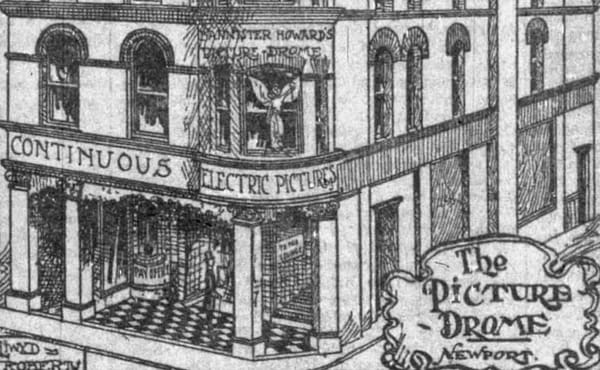
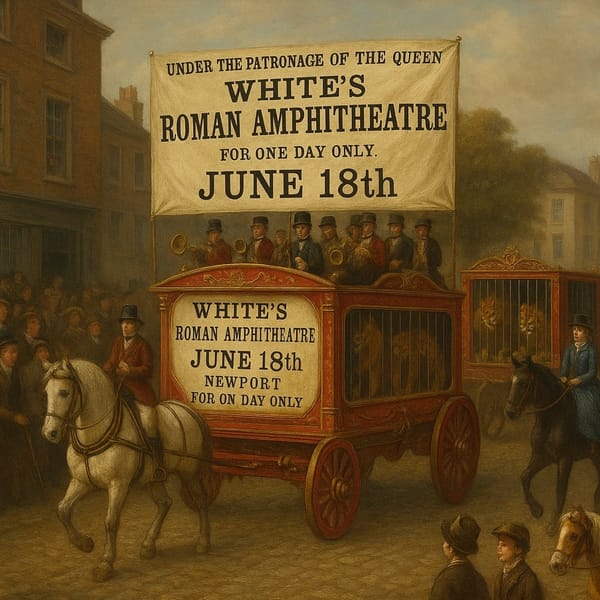
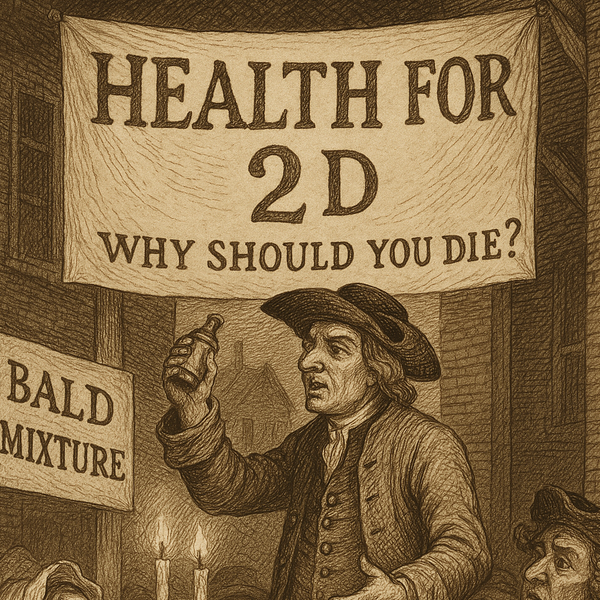
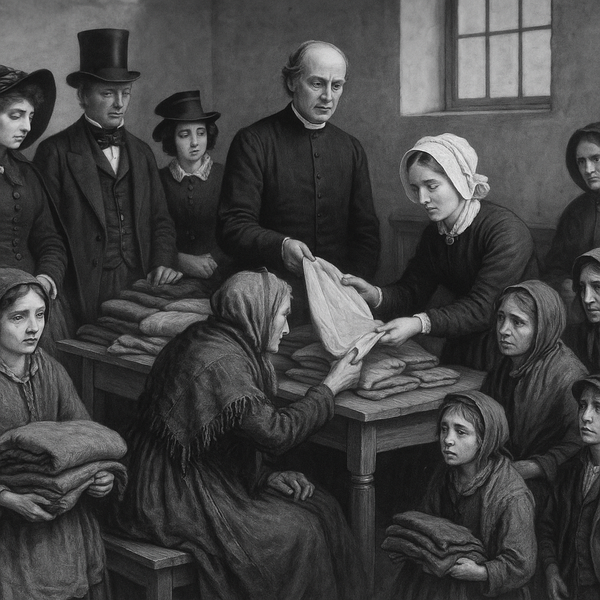
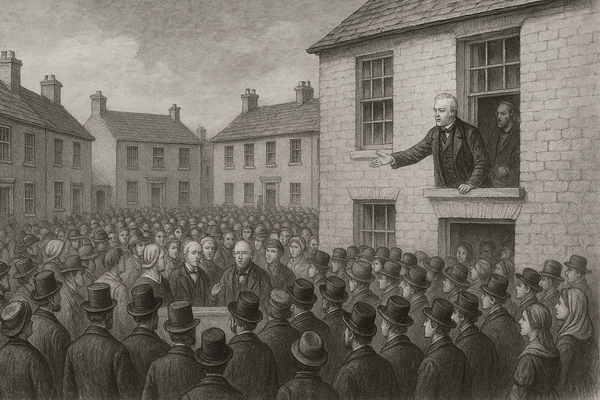
Member discussion